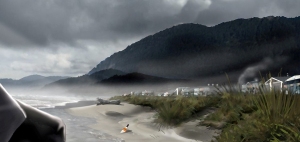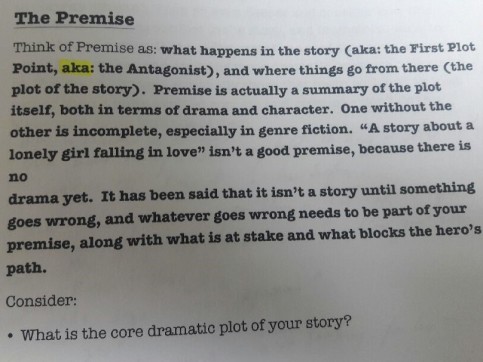novel
What Inspired Solomon
Reprint of an article I wrote on Pubslush about my writing influences. I chose to write about what influenced a very popular character in Return To Sender, Solomon.
~~~~
My writing influences started early in life. When I was ten years old I met a man outside the cannery in Wheeler Oregon. I was waiting for my dad to drop off his fresh caught salmon and have a beer with the cannery owner. I stayed outside because inside was the nostril scorching stench of dead fish! The one bench was half occupied by that man, so I sat down, broke my Popsicle in two and handed him half. He said “Thank you!” and that he would trade me a good story for my gift.
Several times that summer we sat on that dog-eared bench, shared a Popsicle, a story, and watched pigeons’ pick at fish scraps by the boat ramp. He recanted legends and explained that he was one of the last Nehalem Indians, and that he was healer, a shaman. He had a cryptic dialect and a guttural but soothing voice.
Flash-forward many years; him long forgotten, until one night he came to me in a dream. I knew my wise healer was there for a reason. I tingle now, writing this. I had cancer, however didn’t know it yet –I learned two weeks later. During the two weeks that followed his visit I zealously created a favorite character in my novel; Solomon, the last Nehalem Indian. His visit that night was to let me know he was with me.
In Return to Sender Solomon is the mentor archetype and a shaman who heals the protagonist, Theo, so he can transcend his current state and move on to his destiny. Looking back I realize I unconsciously created what I needed for my journey through cancer. I researched Nehalem myths to make Solomon resonate with that man I met five decades ago who graciously traded Popsicles for enduring mythologies.
About the Book:
Father Theo Riley never wanted to be a priest, nor a killer. The former boxing champion and Korean War veteran gave up more than a career when he went into the Army. He lost the only thing he ever wanted: his love, Andréa Bouvre. Friends thought Theo entered the priesthood to mend his broken heart or atone for the massacred orphans he couldn’t save in Korea. However, the truth is much darker and more damning, tied to a blood debt and family secret that has haunted Theo since he was a boy. He drinks to forget he ever had a life of his own—waits for death, prays for mercy, and hopes for a miracle. He gets all three when a child goes missing, another shows up on his doorstep, and the love of his life drives back into his world; the seaside hamlet of Manzanita Oregon. Theo’s dream reunion with Andréa becomes a nightmare when a serial killer who considers himself a holy man targets the town and everyone Theo loves. Drinking days decidedly behind him, Theo and some old warriors set out to send evil back to hell and a few good souls to heaven in Mindy Halleck’s debut novel.
If you liked this post please share on twitter or other social media sites. Thanks! Mindy
Truth Behind the Story — Pirate’s Treasure

Neahkahnie’s Black Demon
Portland Oregon was home. Most of the year was spent working at dad’s shoe repair shop, but for a few years –the good years, we call them–summers were spent in Manzanita Oregon. My novel RTS takes place in that Manzanita of the 1950’s.
It’s a cliché understatement to say that things on the Oregon Coast have changed dramatically –but wow have they. Manzanita is now a swanky and expensive beach town with high end homes and mortgages I can’t afford. Long gone are the days when we stayed in shanty shacks, trailers and tents. Gone are the sun-splashed days when my cousins and I stood on the windy beach studying Neahkahnie Mountain, pondering the many myths of ghosts’ hauntings, and the pirate’s gold that had eluded an army of treasure hunters, most of whom traveled to Neahkahnie with a hunch, a shovel and a wheelbarrow. There were a few law-breakers who came with bulldozers and backhoes. They got arrested. My dad and his buddies included.
The thing we feared the most was what the Indians called the ‘black demon’ who guarded that treasure.
“That black demon must be pissed.” My cousin Nene would always say.
“Yeah,’ I’d say, “But he’s just a ghost, what can he do?”
“He could toss us like tooth-picks.”
“I don’t think so. . .” I’d say, “but you go first.”
We’d hide in the bushes at the foot of the mountain and look up through the binoculars we had ‘borrowed’ from

her dad, my uncle Ed, who would also be pissed, if he knew. We were eleven years old. My brothers who followed, younger, and the gang of summer-kids (Manzanita vacationers) that also followed ranged in age from five to ten. If you ever saw the movie Gooneys (also filmed on the Oregon Coast) then, that was us, but with two scared-ie-cat girls as leaders.
Anyway, that black demon as legend told was left behind one summer afternoon, many years ago. Indians near Neahkahnie Mountain were astounded when two sailing ships approaching their coast –the first ships they had ever seen on the Oregon coast and that they said looked like “great birds” –began to ”thunder” and puffs of smoke blustered from their sides. After considerable noise and smoke, one of the ships began to list, and was cast up on the beach near the foot of Neahkahnie. The other set sail over the horizon and was not seen again.
As the ship pitched onto the sand, men toppled over its sides and staggered ashore. All of them were white, except one, who was much larger than the others–a giant, legend says. And he was black.
To the Indians, who, until then never thought there was another race, these men of diverse colors were an alarming sight, and they observed them much as we might regard aliens from another planet coming into our backyard.
At low tide the colorful strangers brought their belongings ashore. Among their items was a huge chest, so heavy and awkward that it took eight men to carry it. With considerable determination, they carried the chest a short way up the mountain, where they then dug a deep hole. They then lowered the chest into the hole. The black giant, whom the Indians supposed was an evil demon, was ordered by a knife wielding white man, to step forward. When he did, he was struck down, and his body flung into the hole with the chest. The men then filled the hole with sand and returned to the beach. The Indians watched all night. The men lifted small boats off the listing shipwreck and rowed away in the moonlight, never to be seen again. The Indians did not disturb the demons resting place, but legend holds that the sand at the end of the mountain turns black in winter. That the black demon pirate is often heard bellowing his anger across the sea, and that when treasure hunters have gotten close, that black pirate has manifested great tragedy in their lives. It was him we wanted to get a glimpse of –from far away, but a glimpse just the same.
So, we’d climb, pulling ourselves up by tugging on the slopped junipers or jagged rocks of the path. Every time someone fell or got hurt we claimed they were pushed by the black demon pirate. Eyes would bulge. Paranoia would set in. Every natural sound had an unnatural effect. We never made it to the top but instead would make it about halfway up the path on the side of the mountain and run yelling and screaming back down.
Summers in manzanita were filled with ghost stories, roasting hot dogs and marshmallows at the campfires along the shore, and watching for that black pirate who we believed sat on a rock at the crest and watched us as we imagined we were watching him.
Of course we never got a glimpse of him. Nobody I know ever found the elusive gold treasure, but a couple people I know spent a small fortune trying to and several days in the Tillamook County jail to prove their devotion.
While I don’t know about that black pirate who haunts Neahkahnie Mountain, what I do know is that I and my brothers have all had mystical, often frightening, often spiritual sightings and happenings when hiking there. So did our dad, that’s why he stopped looking for the black pirate’s gold, saying, “Let him have it.” One of my brothers looked for a bit, but the rest of us never did. To just, “Let him have it.” made more sense. The story of that black pirate plays a role in Return To Sender, which in many ways is ultimately how dad felt about that rumored treasure. 🙂
You can find a lot of info on the history of Neahkahnie, Manzanita, Tillamook or Nehalem at the Tillamook museum.



